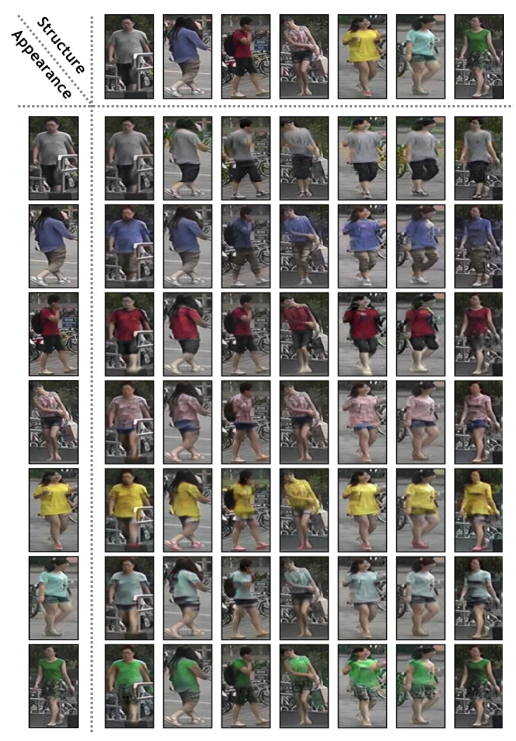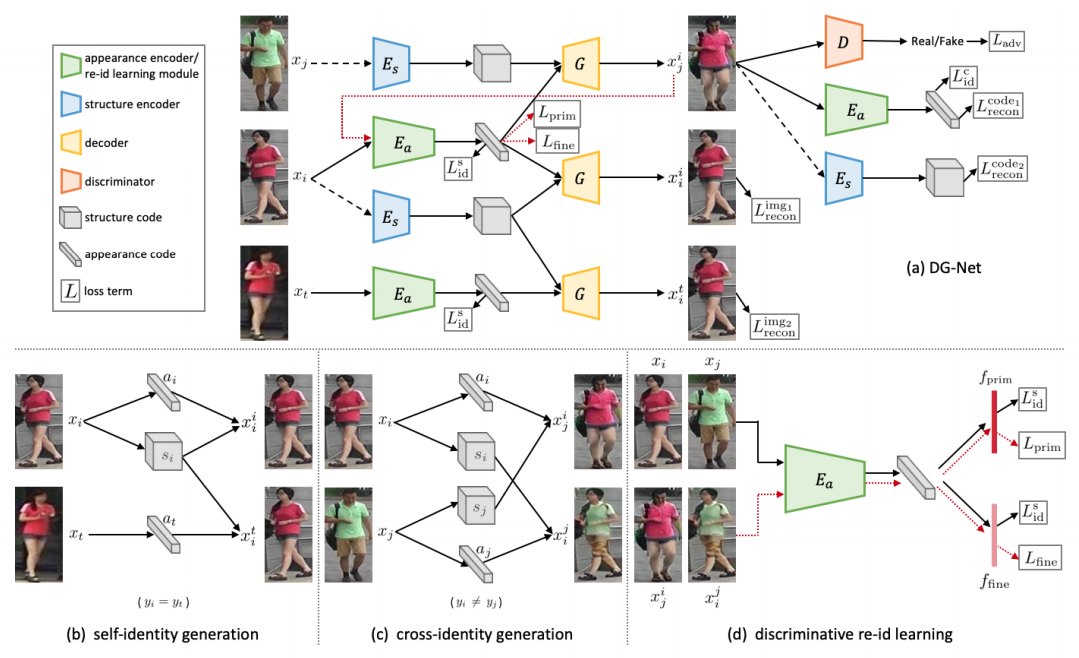GAN_for_Data_Augmentation¶
Current quality of GAN seems not really improve model…but it is a new area to be explored. Just list some paper
The Effectiveness of Data Augmentation in Image Classification using Deep Learning Sadly, seems that GAN-based data augmentation is not better than tranditional data augmentation
Adversarial Domain Adaptation¶
| mean IOU | Per-pixel accuracy | |
|---|---|---|
| Oracle (Train and test on Real) | 60.3 | 93.1 |
| Train on CG, test on Real | 17.9 | 54.0 |
| Train on CycleGAN, test on Real | 34.8 | 82.8 |
Person-reID GAN (ICCV 2017)¶
Unlabeled Samples Generated by GAN Improve the Person Re-identification Baseline in vitro
(label smoothing regularization for outliers) LSRO¶
use GAN generate new (negative) input, assigns a uniform label distribution to the unlabeled images, which regularizes the supervised model and improves the baseline.
BAGAN¶
BAGAN: Data Augmentation with Balancing GAN
The generative model learns useful features from majority classes and uses these to generate images for minority classes. We apply class conditioning in the latent space to drive the generation process towards a target class. The generator in the GAN is initialized with the encoder module of an autoencoder that enables us to learn an accurate class-conditioning in the latent space.
DeLiGAN (CVPR 2017)¶
DeLiGAN : Generative Adversarial Networks for Diverse and Limited Data
when data is limited yet originates from a diverse image modality, increasing the network depth becomes infeasible.
- enhance intra-class diversity
Instead of increasing the model depth, we propose to increase the modelling power of the prior distribution. In particular, we propose a reparameterization of the latent space as a Mixtureof-Gaussians model
VERI-Wild (CVPR 2019)¶
VERI-Wild: A Large Dataset and a New Method for Vehicle Re-Identification in the Wild Embedding adversarial learning for vehicle re-identification
- collect new dataset
- propose a new method for vehicle ReID
Feature Distance Adversarial Network (FDA-Net)¶
a novel feature distance adversary scheme is designed to online generate hard negative samples in feature space.
FD-GAN: Pose-guided feature distilling GAN for robust person re-identification (NIPS 2018)¶
Pose-guided
Multi-pseudo regularized label for generated samples in person re-identification. (TIP 2018)¶
Pose transferrable person re-identification (CVPR 2018)¶
Pose-guided
Pose-normalized image generation for person re-identification (ECCV 2018)¶
DG-Net (2019)¶
Joint Discriminative and Generative Learning for Person Re-identification
In this paper, we seek to improve learned re-id embeddings by better leveraging the generated data. To this end, we propose a joint learning framework that couples re-id learning and data generation end-to-end. Our model involves a generative module that separately encodes each person into an appearance code and a structure code, and a discriminative module that shares the appearance encoder with the generative module. By switching the appearance or structure codes, the generative module is able to generate high-quality cross-id composed images, which are online fed back to the appearance encoder and used to improve the discriminative module.

